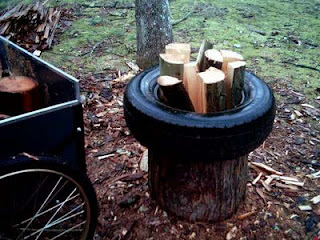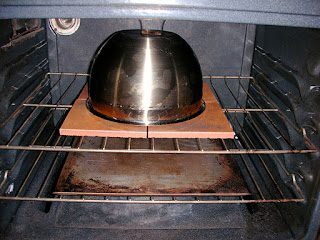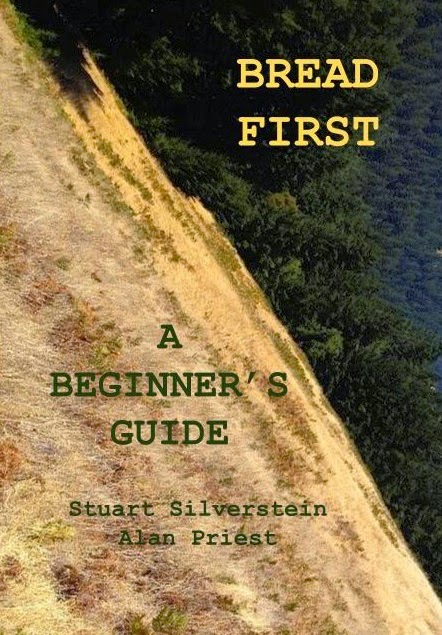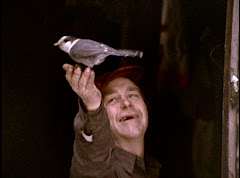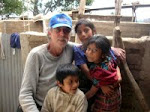WALTER LANE’S BISCUITS
This is the only recipe in Bread Earth and Fire that calls for baking powder, milk and butter.
Walter Lane was one of the subjects of a documentary film I made with Richard Searls, and this recipe is not unique, but Walter’s baking method was most unusual and resourceful.
Walter Lane was always baking biscuits in a stovepipe contraption that he constructed above the oven in his trapper's shack. The stovepipe compartment, where the biscuits were placed to bake, captured waste heat from his woodstove. There was no way he'd allow heat to escape up the chimney without putting it to good use first. Walter was the ultimate recycler.
The oven shown is quite a pricey affair, but Walt was able to fabricate something similar for just a few dollars.
YIELD: 6-8 biscuits
INGREDIENTS: 2 cups all-purpose, unbleached white flour
2 teaspoons double-acting baking powder
1/2 teaspoon baking soda
1/2 teaspoon salt
1/2 cup cold butter (1 stick)
1 cup (approx.) buttermilk or regular milk
PROCEDURE:
Biscuits require a hot oven. Fire your oven well in advance; because once you blend your ingredients, you can bake immediately. There’s no waiting for anything to mature or rise.
In a medium-sized bowl, thoroughly blend the flour with the baking powder, baking soda and the salt. Now cut in the cold butter. This means placing small chunks of cold butter on the flour and working it into the flour with a pastry cutter, a fork, or your fingers. After the butter is carefully blended into the dry ingredients, stir in the milk. For biscuits, less stirring is better than more. The texture should be slightly gloppy. Add slightly more or less flour or milk to achieve the proper consistency.
Into a cast iron skillet, drop 1/4 cup scoops of your mixture. Slide the skillet into the oven, keeping the fire to the back or sides. Move the skillet around to get the biscuits to bake evenly. Serve hot with butter and jam, and try not to think about your arteries. You can always leave the butter out of the ingredients. Made with buttermilk, they’ll still be great.
Still image from the movie Dead River Rough Cut
Walter Lane shares his biscuit with a Canada Jay outside his trapper’s shack.
Go
here to watch trailers and stills from the movie.
Here is where you can help. It's been over 35 years since Richard Searls and I made this movie, but now we think it's time for something else.
There can never be a sequel to Dead River Rough Cut, it just can’t be done. However, Richard and I are talking about a new movie, tentatively titled Dead River Pink. We do know about Ann LaBastille, but unfortunately she died just a couple of months ago.Certainly there are some “woodswomen” out there living a “rustic” life. They don’t exactly dislike men, but they want to make their own decisions and have discovered that it’s simply less hassle and more rewarding to live alone. This is not to say that they’re adverse to spending time with a guy, but they just don’t want to live with one.Maybe she’s an artist/writer living in the forest.Maybe she’s an herbalist, but at night she’s a ...Maybe she works in a bank, but retreats to her shack in the woods.Maybe she does every conceivable thing to avoid a “real” job.Maybe she’s a migrant farm worker who follows the harvests.Maybe she’s a Native American who has gone back to the “traditional life.”Regardless, she has to be charismatic, dynamic, outspoken and fearless.Any suggestions would be most appreciated.Stu Silversteinssilverstein@gmail.com




